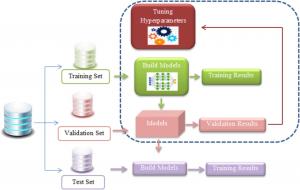
Algorithms can keep drowsy motorists alert and help them avert road accidents, scientists say
Algorithms can alert sleepy drivers and help them avert road accidents that may result from their drowsiness.
SHARJAH, EMIRATE OF SHARJAH, UNITED ARAB EMIRATES, November 25, 2024 /EINPresswire.com/ -- Machine Learning (ML) and Deep Learning (DL) algorithms can reduce road accidents through their ability to detect sleepy drivers and quickly and timely warn them of the dangers their drowsiness may cause, a new study has found.
The findings suggest that drowsiness, which causes drivers to become sleepy and lethargic, is still a severe issue the solution of which has been defying scientists.
The research designs an algorithm-based scheme to help drivers avert drowsiness which contributes to thousands of “fatal incidents and injuries” every year, says Sharjah University’s professor of computer sciences, Saad Harous.
“Detecting driver drowsiness [has] become an important task that necessitates an automated system to detect and prevent these adverse outcomes early on.”
The US National Highway Traffic Safety Administration estimates that drowsiness is behind about 100,000 road accidents every year, causing 1500 deaths and 70,000 injuries.
The research authors, based in universities in both the United Arab Emirates and Algeria, have published their findings in the journal Biomedical Signal Processing Control. (Original Source URL: https://www.sciencedirect.com/science/article/pii/S174680942400939X?casa_token=O7C_duRsHjgAAAAA:gegBdKTDe7FLK7FOS-x6T00Ue-Nyh9JY-yju_bnpXuMV80C7UNP0yiTXc0X6CwdLWr7vOSjp0Q)
The authors write, “Recently, different Machine Learning (ML) and Deep Learning (DL) models have been proposed to detect driver drowsiness. This study utilized a publicly accessible dataset containing twelve healthy participants.
“Reading numerous research papers, we determined no specific EEG-based drowsiness preprocessing parameter values. Consequently, as a first step, and for the first time, to our knowledge in this field, we applied an optimization algorithm to determine the optimal preprocessing parameter values using a CNN model and accuracy as the objective function.”
EEG or electro encephalography is so far one of the most reliable means used to detect the onset of drowsiness and sleep while driving. CNN or conventional neural network is a type of deep learning algorithm which scientists normally use when analyzing visual data.
Prof. Harous acknowledges that previous research has proposed numerous physiological signals and indicators for detecting driver drowsiness.
“To detect and prevent Driver Drowsiness numerous researchers have proposed and implemented various systems by using different techniques, including Machine Learning and Deep Learning algorithms.
“However, the Electroencephalogram (EEG) signal, commonly known as the gold standard, is the most used due to its efficiency and reliability and its simplicity of acquisition. In our work we have proposed an architecture that can detect driver drowsiness with high accuracy and less time.”
The authors employ Random Search Optimization method in their attempt to select the optimal set of preprocessing parameters. They implement multiple CNN architectures and then select the optimal one based on the mean accuracy of 10-fold cross-validation evaluation method.
Moreover, they combine the CNN with ML classifiers (Deep Hybrid Learning). In so doing, they benefit from CNN’s power in automatically extracting EEG features and the advantages of the ML classifiers.
In the absence of specific EEG-based drowsiness preprocessing parameter values, the authors focus first on selecting the optimal set of preprocessing parameters that can enhance the performance of the classification results using the Random Search Optimization method.
The results of the study demonstrate the importance of selecting correct values. Once the correct values were picked up, the authors, according to Prof. Harous, found “the mean accuracy score edging to 95% from 91% with a notable reduction in the training time.
“We have used the Optuna Hyperparameter optimization framework to select the optimal CNN Hyperparameters, which increased the mean accuracy from 95% to 97%.
“Also, as we have noticed that most previous works did not concentrate on how to choose the preprocessing parameter values or what are the appropriate values. We collected all values from many research papers and used an optimization algorithm to find the optimal set.”
“Finally, and most importantly, the use of CNN-SVM classifier achieved the highest average accuracy of 99.9%, and the training time has been reduced to a shallow value.”
The authors attribute the success of their scheme to their proper utilization of the optimization technique to achieve the highest possible accuracy of detecting driver drowsiness based on machine learning and deep learning techniques.
Prof. Harous is upbeat about the practical implications of the study, saying that it “can have a big impact on society if the system is adopted by the transportation authority.”
Now that the results of their research have been substantiated by a peer-reviewed scientific journal, the authors are considering how to put their logarithm-based scheme into practice.
Says Prof. Harous, “One (practical implication) we are thinking about is to have a camera/mobile on the car dashboard. The application will be installed on the camera/mobile.
“But unfortunately, we have not yet received any emails or invitations from industries willing to invest in the project or requesting us to present our work, though we have achieved the highest accuracy in less time comparing to other works.”
LEON BARKHO
University Of Sharjah
+971 50 165 4376
email us here
Distribution channels: Automotive Industry, Electronics Industry, Insurance Industry, Telecommunications
Legal Disclaimer:
EIN Presswire provides this news content "as is" without warranty of any kind. We do not accept any responsibility or liability for the accuracy, content, images, videos, licenses, completeness, legality, or reliability of the information contained in this article. If you have any complaints or copyright issues related to this article, kindly contact the author above.
Submit your press release

